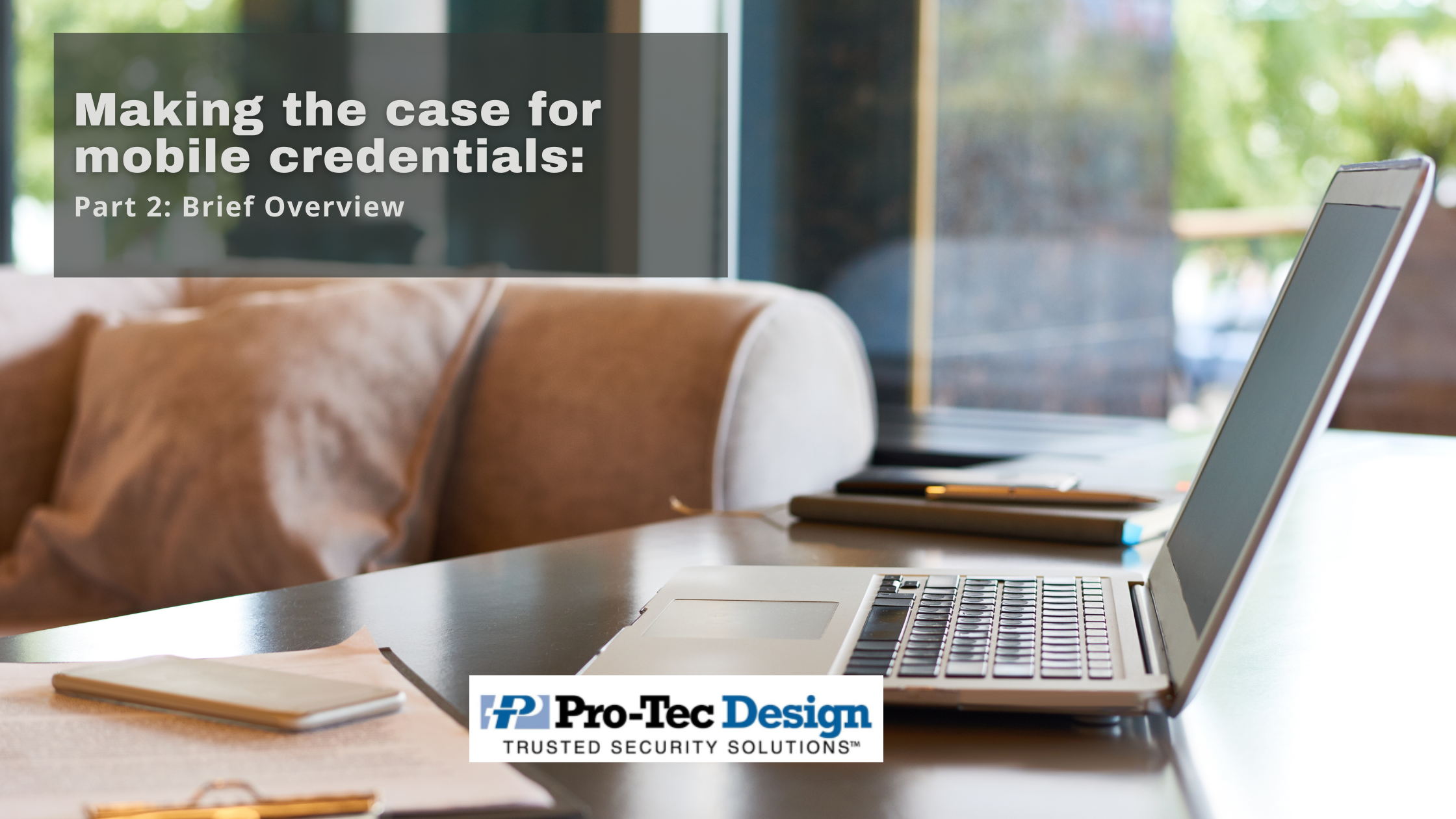Mobile phones have quietly made a name for themselves as being some of the most secure devices on the market. Current smartphones use multiple authentication processes. Most can use facial recognition, biometrics, passcodes, or some combination of the three. This adds a whole new layer of security compared to the physical access badge. With these different authentications in place, you can be confident that your credentials are secure on your device. For credentials, this added step of authentication will increase your security at all access points.
Mobile credentials make use of smartphones technology by using its built-in encryption to block anyone from replicating vs. the easily replicated prox cards. And nearly everyone is less likely to share their phone with someone to provide them access than they would with their physical access card.
Some mobile credentials also provide a digital badge which allows for visual verification of the user. And if a phone is lost, mobile credentials can be immediately revoked and reissued with a new phone.
Mobile phones can keep interactions anonymous and encrypted with many of the tools that come with the phone out of the box.
Mobile credentials are incredibly easy for the user. Ever walk up to the front door of your office in the morning with a backpack, cup of coffee and your phone and try to get your access card out of your purse or billfold? Not the most convenient maneuver of the day. Depending upon the level of security on the door, getting access may be as simple as twisting your phone as you approach the office door. At worse, you may have to unlock your phone for entrance. But either way, you no longer need to have your access card around your neck or in your purse.
How it works:
To implement a mobile credential strategy, software is adopted to the access control solution which allows the mobile credential to be issued. Once received, the mobile device is presented at a door or secure area where a mobile credential reader is activated once in proximity. The reader then sends the credential data to the access control system for verification. Once verified,
Below are some of the ways mobile credentials are helping administrators:
- Mobile credentials allow the distribution of access to anyone, anywhere, at any time. They eliminate the need for purchasing, printing, issuing, and replacing keycards, badges, and fobs.
- With today’s world going touch free and germ conscious, the less touch points we must interact with while entering the office, the healthier we can keep our teams.
- For larger companies that may have mostly remote workers, mobile credentials alleviate the headache of sending thousands of fobs/keycards in the mail and hoping that they all make it to the correct destination. You will be able to push these out via cloud services and maintain them the same way.
- Colleges tend to use keycards/fobs for most of their access points. Mobile credentials are increasing the security at those access points as students have more accountability with their phones than a plastic card.
- Managing mobile credentials across an enterprise organization is simple. Minimization of local staff handling physical credentials enable centralized mobile credential administration
As you look at your systems, think about how it will hold up with a world trying to decrease our points of contact and increase your security without breaking the bank. Mobile credentials can integrate into current systems and remove the need to stock the materials you would need to purchase for physical cards. When looking at your current solution, use this post as a checklist for what your access control system can do. As many teams move to remote and employee's spend less time at the office, having a centralized system for your credentials will become more important.
For 51 years, Pro-Tec Design has been consulting, designing, installing, and maintaining security solutions for well-known companies, cities, school districts, and healthcare organizations. We protect people, data, and assets, ensuring business continuity. If you’re unsure about how up to date your current system is contact us for a HealthCheck today.
